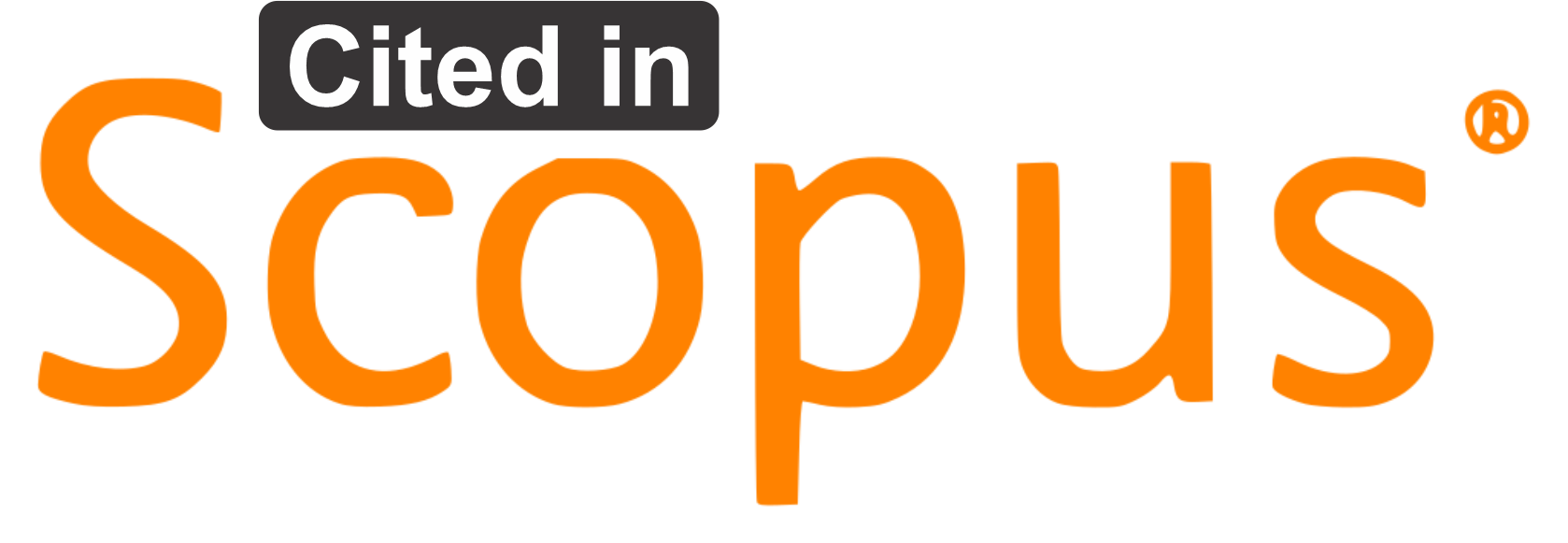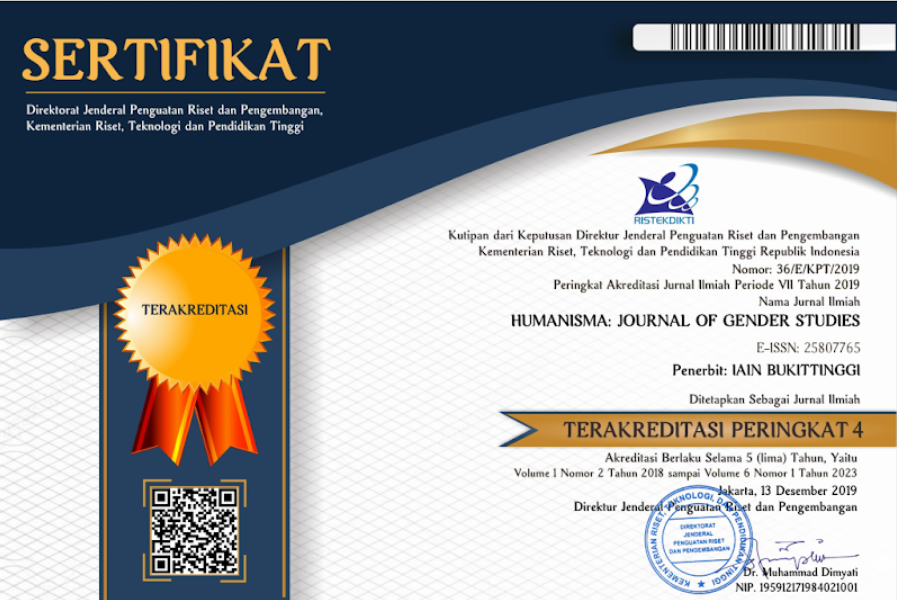PEREMPUAN DAN KESENJANGAN DIGITAL DI DALAM KELUARGA
DOI:
https://doi.org/10.30983/jh.v2i1.510Abstract
The rapid development of information and communication technology was given a new hope and advantages for their users. Therefore, people didn’t feel anxious to adopt a new technology. It is just, sometimes, the development occurred a side effect namely digital divide. Digital divide has a big chance to occurs when technology develop in rapid way. In Indonesia, digital divide could be seen from various form such as infrastructure, accesses, skills, behavior, and content. Digital divide was influenced by several factors. They are age, gender, education, and income. This research examines the digital divide among man (father) and female (mother) inside a family. Qualitative method was used by this research with case study as a research design. There are ten woman who are a sample of this research. The result shows that there is a digital divide among man and female. The gap related to motivation (female had less motivation in using digital technology), material (woman had less material than man), skills (most of female only had a operational skilss), and usage (female is a passive users).    Â
Pertumbuhan teknologi komunikasi informasi yang begitu cepat memberikan harapan baru serta manfaat bagi penggunanya. Sehingga, masyarakat tidak merasa ragu untuk mengadopsi setiap teknologi baru dilahirkan. Hanya saja, terkadang, pertumbuhan tersebut menimbulkan dampak negatif berupa kesenjangan digital. Semakin pesat perkembangan teknologi maka akan semakin memperbesar peluang terjadinya kesenjangan digital. Di Indonesia, kesenjangan digital dapat dilihat dari berbagai macam bentuk seperti kesenjangan infrastruktur atau perangkat, akses, keterampilan, perilaku, dan konten. Kesenjangan digital dipengaruhi oleh berbagai macam faktor personal seperti usia, gender, pendidikan, dan pendapatan. Penelitian ini bertujuan untuk melihat kesenjangan digital antara perempuan dan laki-laki (ibu dan ayah) dalam sebuah keluarga. Metode yang digunakan adalah metode kualitatif dengan desain studi kasus. Sampel yang digunakan sebanyak sepuluh orang dengan menggunakan teknik sampel purposive. Hasil penelitian menunjukkan bahwa terdapat kesenjangan digital antara perempuan dan laki-laki. Kesenjangan tersebut terkait dengan motivasi (perempuan memiliki motivasi yang rendah), material (tingkat pendidikan dan pendapatan yang rendah membuat perempuan memiliki akses yang rendah ke teknologi digital), keterampilan (sebagian besar perempuan hanya sampai pada tahapan keterampilan operasional), dan penggunaan (perempuan merupakan pengguna pasif).
Keywords:Â female, digital divide, family, qualitative, van dijk.Â
References
Abu-shanab, E., & Al-jamal, N. (2015). Exploring the Gender Digital Divide in Jordan. Gender, Technology and Development, 19(1), 91–113. https://doi.org/10.1177/0971852414563201
Aliance For Affordable Internet. (2017). Affordability Report 2017. Retrieved from http://1e8q3q16vyc81g8l3h3md6q5f5e.wpengine.netdna-cdn.com/wp-content/uploads/2017/02/A4AI-2017-Affordability-Report.pdf
Andreasson, K. (Ed.). (2015). Digital divides. The New Challenges and Opportunities of e-Inclusion. United States of America: CRC Press. https://doi.org/10.1332/policypress/9781847424396.003.0009
APJII. (2017). Penetrasi & Perilaku Pengguna Internet Indonesia 2017. Asosiasi Penyelenggara Jasa Internet Indonesia.
Compaine, B. M. (Ed.). (2001). The Digital Divide. Facing a Crisis or Creating a Myth.
Hadiyat, Y. D. (2014). Kesenjangan Digital di Indonesia Digital Divide in Indonesia (Case Study in Wakatobi-Regency). Jurnal Pekommas, 17(20411), 81–90. Retrieved from http://download.portalgaruda.org/article.php?article=278889&val=6557&title=Kesenjangan Digital di Indonesia (Studi Kasus di Kabupaten Wakatobi)
Ji, P., & Skoric, M. M. (2013). Gender and social resources : digital divides of social network sites and mobile phone use in Singapore. Chinese Journal of Communication, 6(2), 221–239. https://doi.org/10.1080/17544750.2013.785673
Limilia, Putri. Pratamawaty, Benazir Bona. (2018). Information Access Skills in Mothers as Containment of Internet Negative Impact. Jurnal The Messenger, 10 (1), 72-82.
Limilia, Putri. Pratamawaty, Benazir Bona. (2017). Penggunaan Media Digital sebagai Keterampilan Dasar Literasi Informasi dan Media. Prosiding Konferensi Nasional Komunikasi, Vol. 01, No.01
Lune, H., & Berg, B. L. (2017). Qualitative research methods for the social sciences.
Parks, P. J. (2013). The Digital Divide. San Diego: Reference Point Press. Retrieved from www.ReferencePointPress.com
Pick, J. B., & Sarkar, A. (2015). The Global Digital Divides. https://doi.org/10.1007/978-3-662-46602-5
Safril, A., Wardahni, A., Ponsela, D. F., Tsauro, M. A., Hubungan, D., & Universitas, I. (2010). Problem Dasar Kesenjangan Digital di Asia Tenggara. Global & Strategis, 2, 204–220.
Van Dijk, J. (2008). The Digital Divide in Europe. London: Routledge. Retrieved from https://pdfs.semanticscholar.org/dab6/63c4664591cb44e956ab94482a4cb1b1d425.pdf
Van Dijk, J. A. G. M. (2012). The Evolution of the Digital Divide The Digital Divide turns to Inequality of Skills and Usage Introduction: A Relational View of Inequality (pp. 57–75). Amsterdam: IOS Press. https://doi.org/10.3233/978-1-61499-057-4-57
Wahyuningtyas, N., & Adi, R. (2011). Digital Divide Perempuan Indonesia, 84–92.
Windasari, I. P., Surendro, K. (2011). Pengukuran Kesenjangan Digital di
Downloads
Published
How to Cite
Issue
Section
Citation Check
License
Authors who publish with this journal agree to the following terms:
- Authors retain copyright and grant the journal right of first publication with the work simultaneously licensed under a Creative Commons Attribution-ShareAlike 4.0. that allows others to share the work with an acknowledgment of the work's authorship and initial publication in this journal.
- Authors are able to enter into separate, additional contractual arrangements for the non-exclusive distribution of the journal's published version of the work (e.g., post it to an institutional repository or publish it in a book), with an acknowledgment of its initial publication in this journal.
- Authors are permitted and encouraged to post their work online (e.g., in institutional repositories or on their website) prior to and during the submission process, as it can lead to productive exchanges, as well as earlier and greater citation of published work (See The Effect of Open Access).







